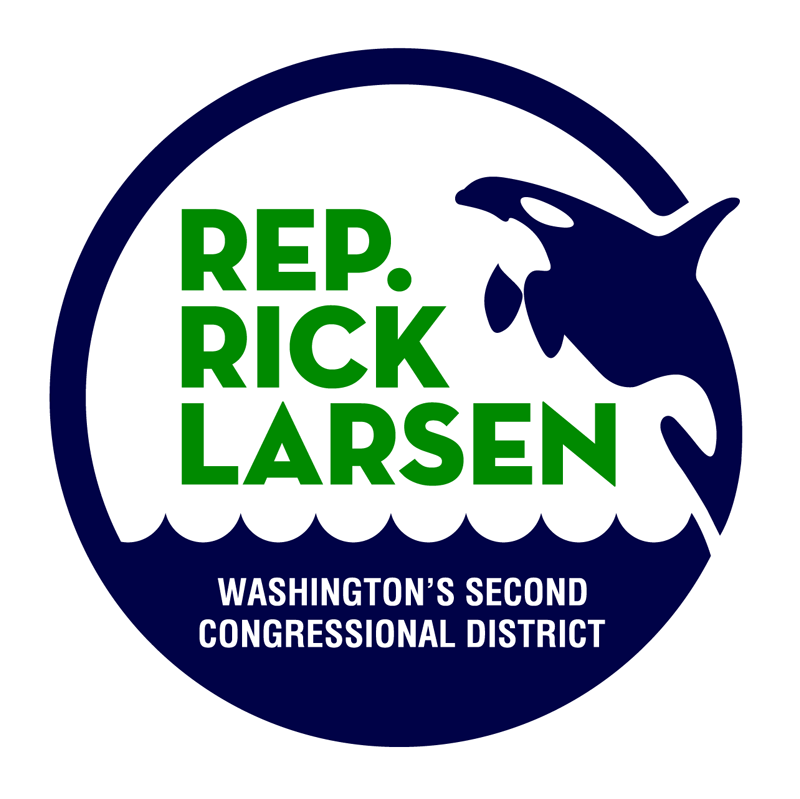Press Releases
Larsen Opening Statement at Aviation Subcommittee Hearing on "Finding the Right Frequency: 5G Deployment & Aviation Safety"
Washington, D.C.,
February 3, 2022
Rep. Rick Larsen (WA-02), Chair of the Aviation Subcommittee, delivered the below statement during a hearing on the impact the deployment of 5G technologies has on the aviation industry with Federal Aviation Administration Administrator (FAA) Stephen Dickson and aviation and telecommunications stakeholders.
WASHINGTON, D.C. - Today, Rep. Rick Larsen (WA-02), Chair of the Aviation Subcommittee, delivered the below statement during a hearing on the impact the deployment of 5G technologies has on the aviation industry with Federal Aviation Administration Administrator (FAA) Stephen Dickson and aviation and telecommunications stakeholders. More information about Thursday's hearing, including witnesses and testimony, can be found here. For a recording of Chair Larsen’s opening remarks, click here. For a recording of Larsen questioning Administrator Dickson, click here. Remarks as delivered. “Good morning and welcome to today’s Aviation Subcommittee hearing titled “Finding the Right Frequency: 5G Deployment and Aviation Safety.” “On January 24th, 25th and 26th, Alaska Airlines cancelled over 50 flights at Paine Field in Everett, Washington, my hometown. “Was it the thicker than usual 24-hour fog? No, planes fly in worse. “Was it the Embraer 175 radio altimeter? Also no. “Or the runway orientation? Was it pointing the wrong way? That’s a silly assumption to make. “Was it just the presence of a radio tower with a soon-to-be activated 5G transmitter? No, not just that. “Unfortunately, the problem was all of those things coming together in a perfect storm of technology. “This true story about 5G and aviation safety shows that the problem we are addressing today has more layers than a Dagwood sandwich. “What do we do when we are faced with a complex problem like this? “We break it into its parts and focus on basic principles. Our basic principle on this Subcommittee is aviation safety. “So how do we ensure that 5G and aviation safety can coexist, in the words of several of our witnesses. “What I hope emerges from this hearing is that the Subcommittee has a firm grasp of what the telecommunication and aviation industries, the FAA, the FCC, the NTIA and others can do to anticipate future 5G rollout conflicts, avoid them, and what impact future FCC auctions may have on aviation operations, and establish a process, formal or informal, to proactively address these conflicts. “In preparation for today’s hearing, here is what I have concluded: “The aviation industry has expressed concerns about 5G interference as far back as 2015 at the World Radio Conference. “The NTIA, the federal agency responsible for coordinating spectrum policy, failed to communicate the FAA concerns through the formalized FCC process. “Telecom engineers and aerospace engineers have the name “engineers” in common, but beyond that, they speak different engineering languages when they speak to each other and when they speak to each other at all. But I understand that is changing as well, and that is a positive outcome. “The industries, aviation and telecom, have misaligned cultures on this issue, with telecom being about clearer, faster communications as its selling point, and aviation has aviation safety as its selling point. It’s what gives the public confidence in flying. “This is not a federal government only problem. It is also an industry problem “So what can we do to help aviation safety ad 5G coexist? “It is imperative that there will be a continued rollout of the C-band from 3.7 to 3.8 MHz on the spectrum and eventually 3.8 to 3.98, which will bring it closer to the 4.2 mHz band where the aviation band starts. There’s a potential for future auctions as well. And then there’s 6G coming down, and it means different things to different people, and we don’t know what it means for aviation safety. So we need to begin to understand that. “I think we need to establish an informal or formalized communication between the FAA and the FCC moving forward as well, so hopefully we don’t have to have another hearing like this. “I would like to think that perhaps in foreign policy what they call a Track II dialogue can be convened, which is an informal, non-governmental discussion, in this case on 5G, on radio altimeters, on next steps that can be used to inform the more formal mechanisms – sort of sort these things out informally and the inform the formal mechanisms. “I certainly look forward to other ideas that we are going to hear from our witnesses today. “As we move forward, maybe we can get this Dagwood sandwich down to bite-sized chunks.” ### |

